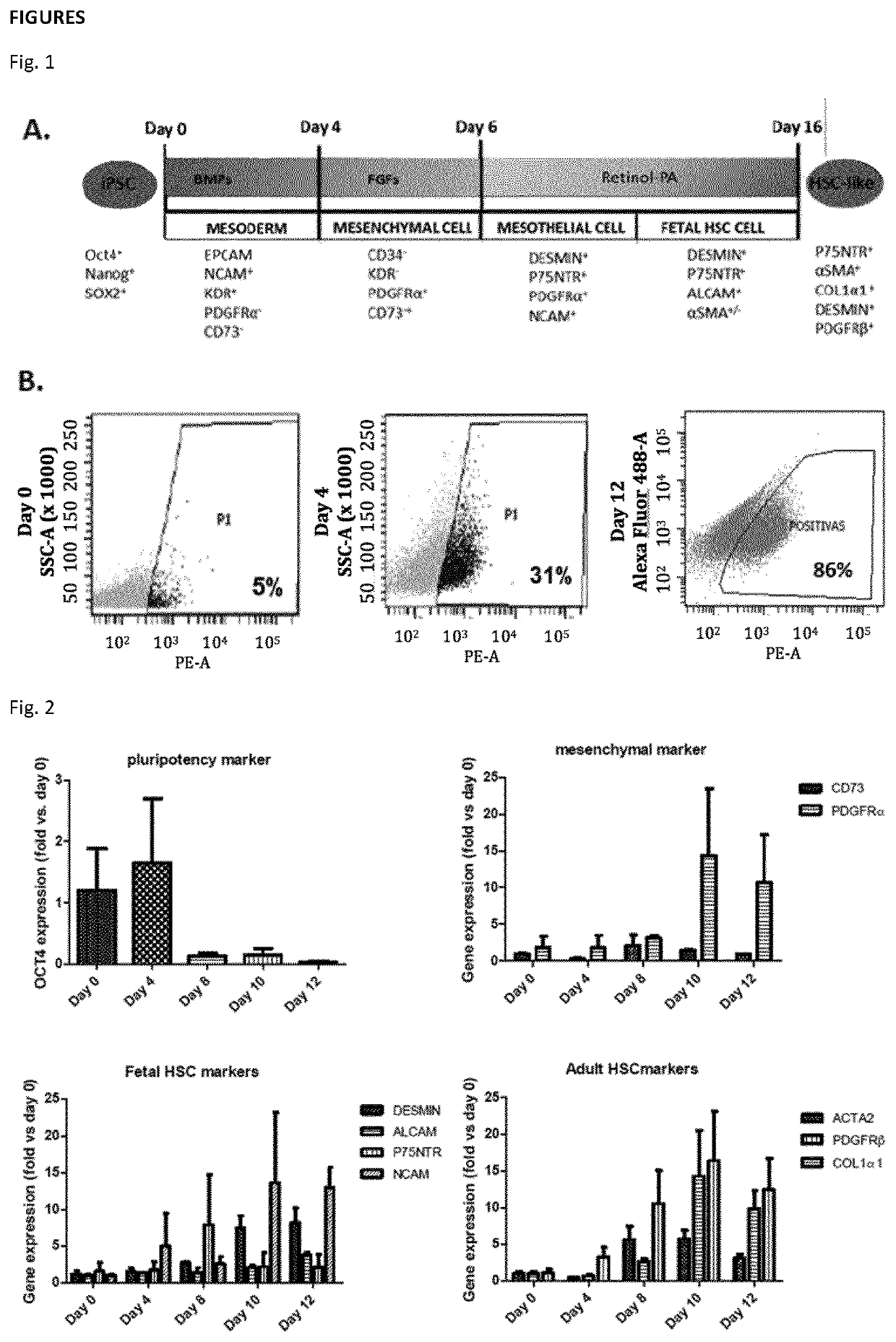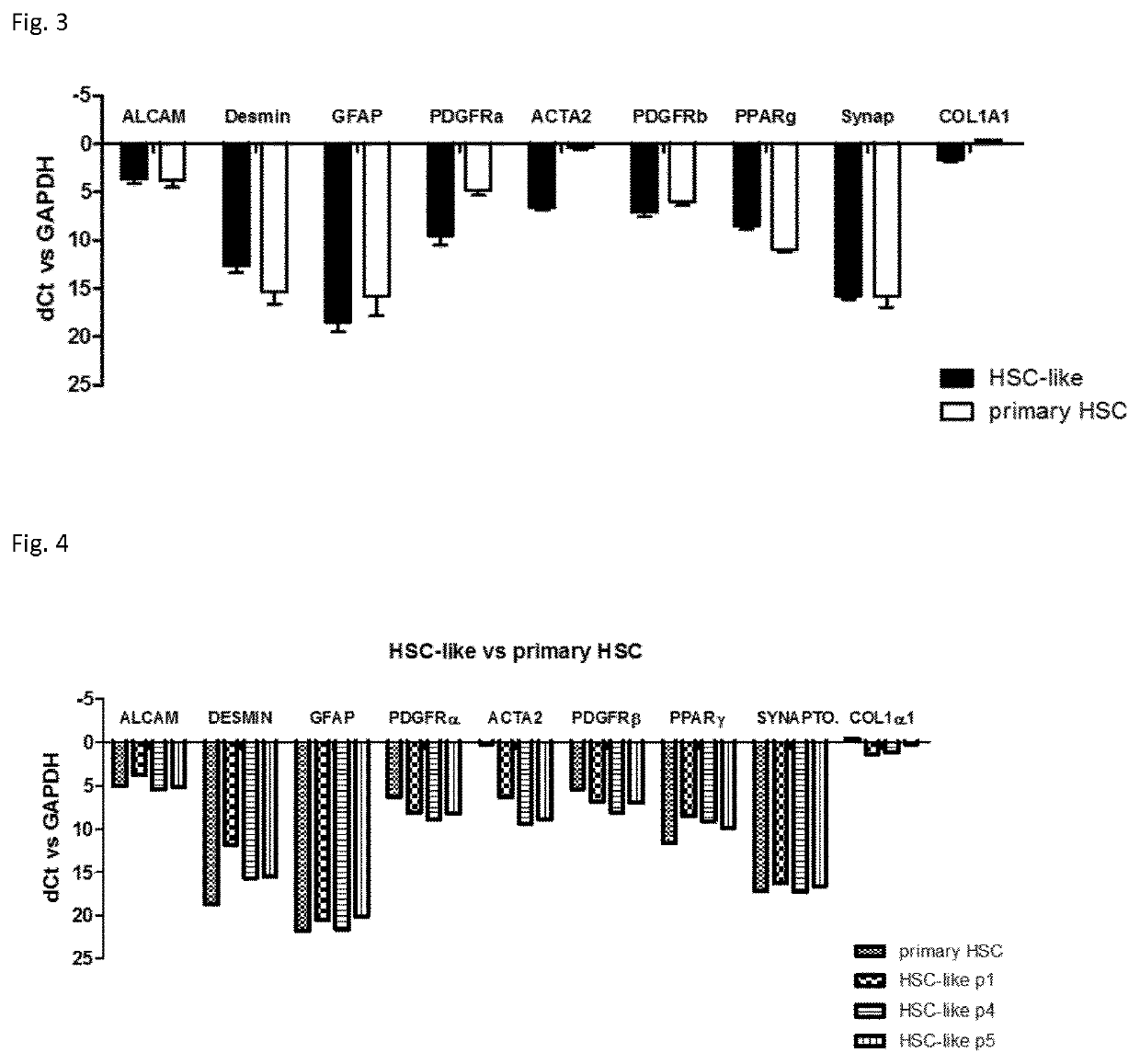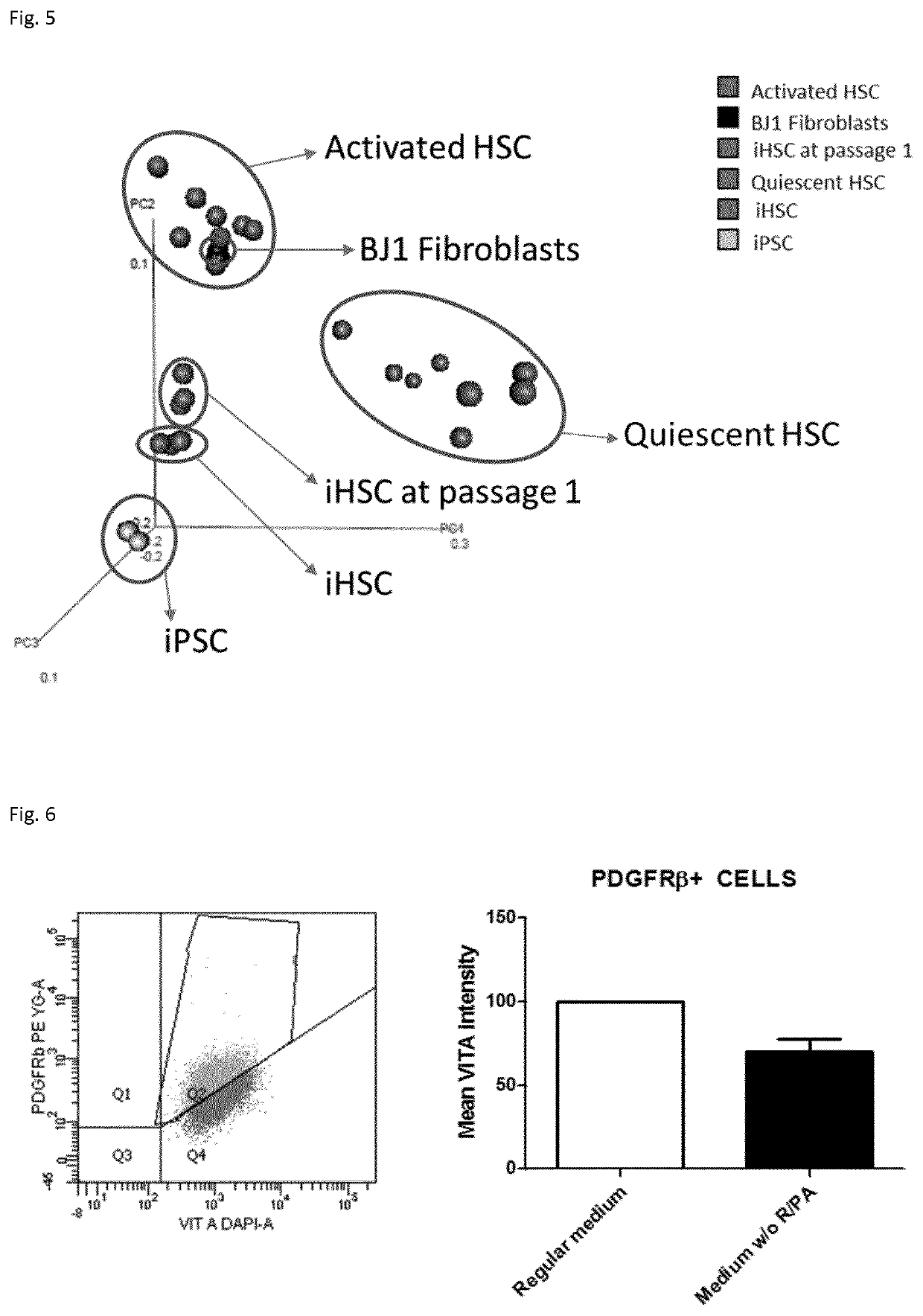Methods for differentiating cells into hepatic stellate cells
- Summary
- Abstract
- Description
- Claims
- Application Information
AI Technical Summary
Benefits of technology
Problems solved by technology
Method used
Image
Examples
example 1
Differentiation of Pluripotent Stem Cells to Hepatic Stellate Cell-Like Cells and Characterization
[0141]Pluripotent stem cells (PSC) have an inner cell mass phenotype, and therefore require to be directed along the embryonic and fetal development to acquire a mature hepatic stellate cell (HSC) phenotype. The protocol induces the specification to mesodermal cells, followed by the acquisition of a mesenchymal phenotype, mesothelial and finally the HSC phenotype (FIG. 1). A diagram of the differentiation protocol is found in FIG. 1A. One of the best-described extracellular markers in HSC is PDGFRβ. Therefore, we assessed the number on PSC-derived HSC-like cells by evaluating the percentage of cells expressing this receptor. As shown in FIG. 1B, flow cytometry analysis showed that along differentiation, the percentage of PDGFRβ cells increased, reaching a maximum of about 80% at day 12, suggesting that the majority of the differentiated cells have already acquired HSC phenotype. Moreove...
example 2
Culture of PSC-Derived HSC-Like Cells
[0144]The number of cells from which to start the differentiation is not a concern, since PSC are a renewable source of stem cells and can be expanded almost indefinitely. Therefore, the differentiation could be scaled-up to obtain the desired number of PSC-derived HSC-like cells. However, the differentiation is expensive and for some applications it may be desirable to have the possibility to expand the PSC-derived HSC-like cells. In order to expand and subculture HSC-like cells, we have adapted the culture conditions for primary HSC. PSC-derived HSC-like cells could be expanded for several passages in culture while maintaining the phenotype of differentiated HSC-like cells. Moreover, PSC-derived HSC-like cells showed a phenotype similar to primary HSC, which was preserved upon sub-culture (FIG. 4).
example 3
Transcriptomic Analysis of PSC-Derived HSC-Like Cells
[0145]In order to further characterize PSC-derived HSC-like cells, a transcriptomic analysis was performed with differentiated cells and PSC-derived HSC-like cells at passage 1, and results were compared to parental undifferentiated PSC and primary quiescent and activated HSC. As shown in FIG. 5, principal component analysis, showed a clear clustering of each group of cells. Moreover, PSC-derived HSC-like cells showed an intermediate phenotype between quiescent and activated HSCs. Interestingly, PSC-derived HSC-like cells at passage 1, showed a closer identity to cultured activated HSC, suggesting that this expression profile could be due to culture conditions. Hierarchical cluster analysis of uncultured quiescent HSC and PSC-derived HSC-like cells showed a clear clustering of groups, showing that PSC-derived HSC-like cells still show differences in gene expression to quiescent HSC (data not shown). These differences may be relate...
PUM
| Property | Measurement | Unit |
|---|---|---|
| concentration | aaaaa | aaaaa |
| concentration | aaaaa | aaaaa |
| fluorescence | aaaaa | aaaaa |
Abstract
Description
Claims
Application Information
 Login to View More
Login to View More - R&D
- Intellectual Property
- Life Sciences
- Materials
- Tech Scout
- Unparalleled Data Quality
- Higher Quality Content
- 60% Fewer Hallucinations
Browse by: Latest US Patents, China's latest patents, Technical Efficacy Thesaurus, Application Domain, Technology Topic, Popular Technical Reports.
© 2025 PatSnap. All rights reserved.Legal|Privacy policy|Modern Slavery Act Transparency Statement|Sitemap|About US| Contact US: help@patsnap.com



